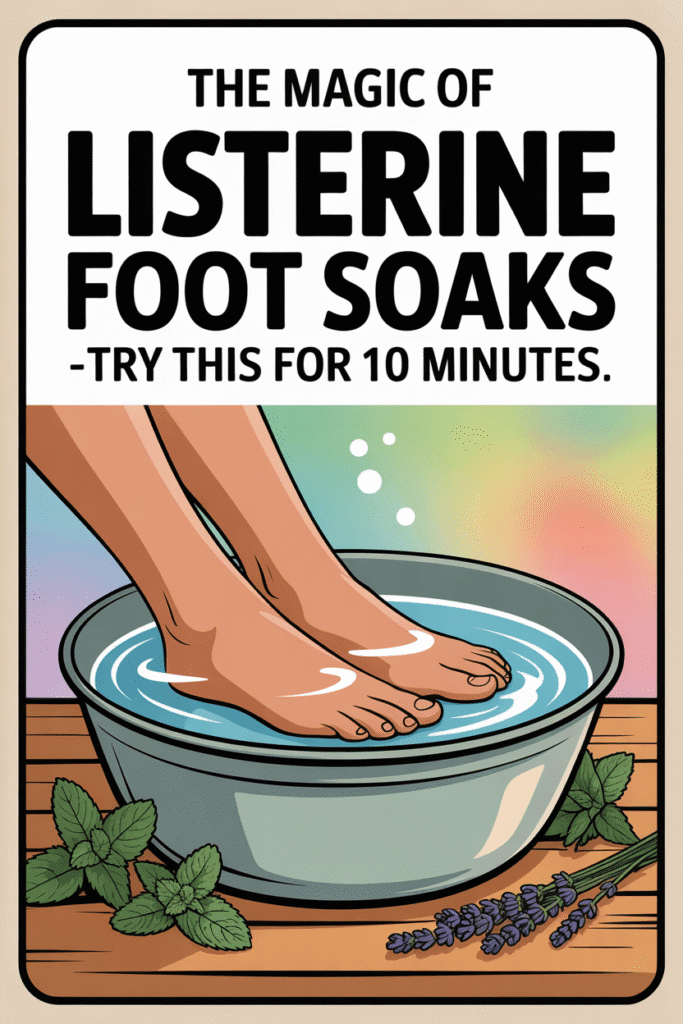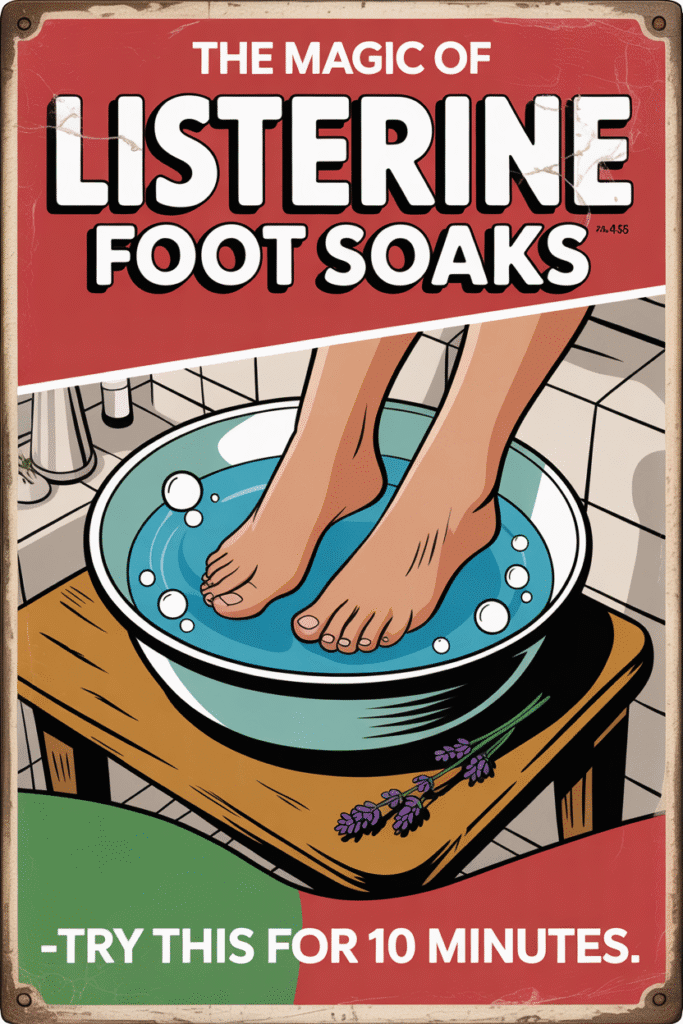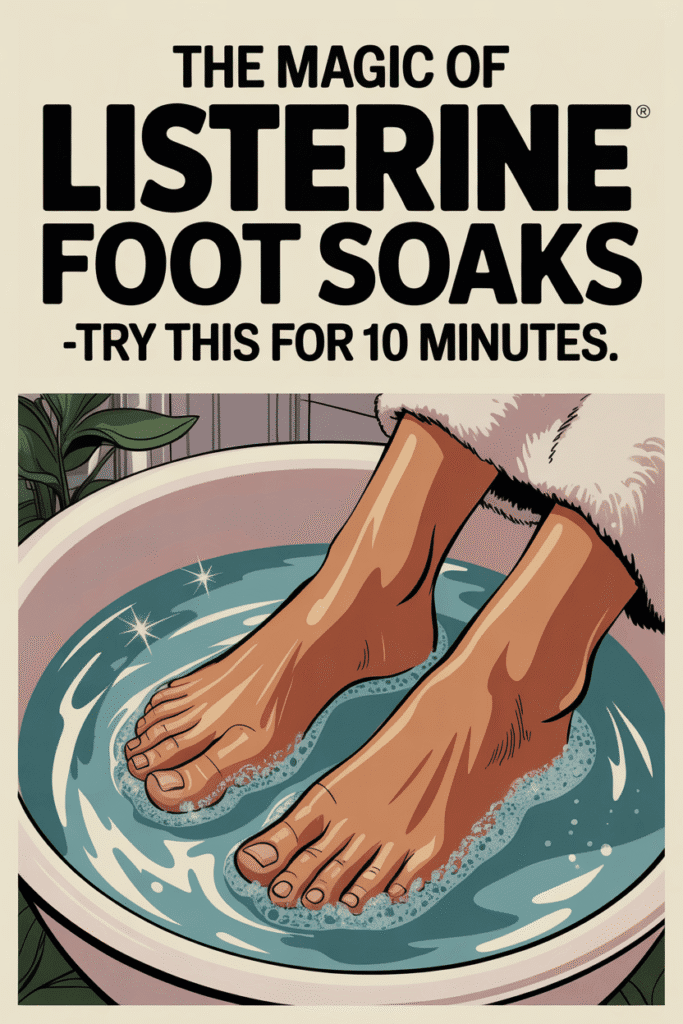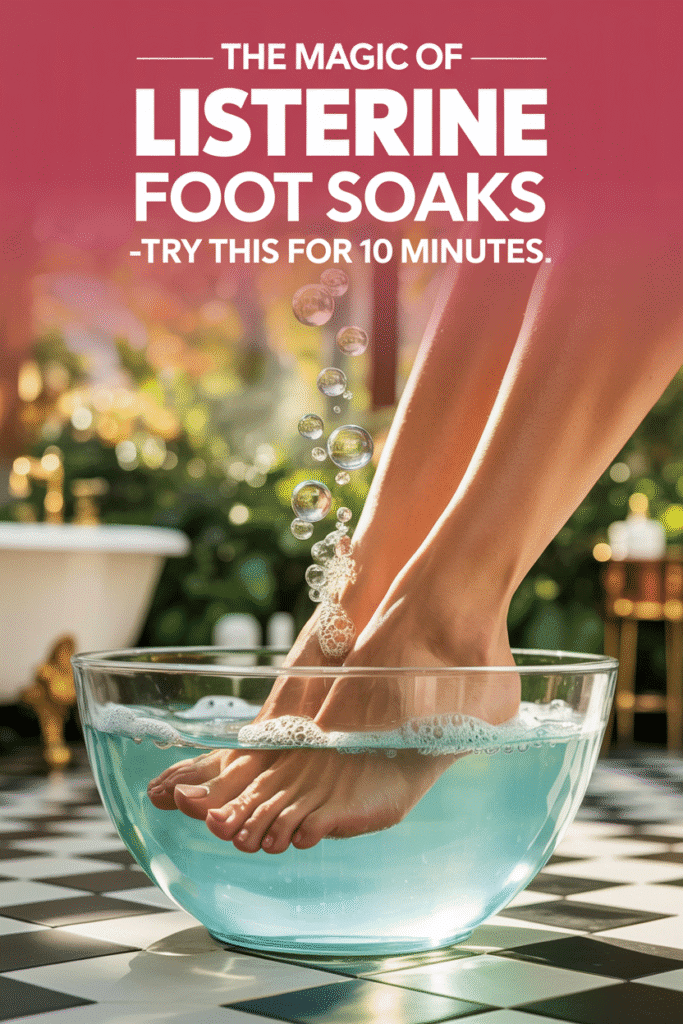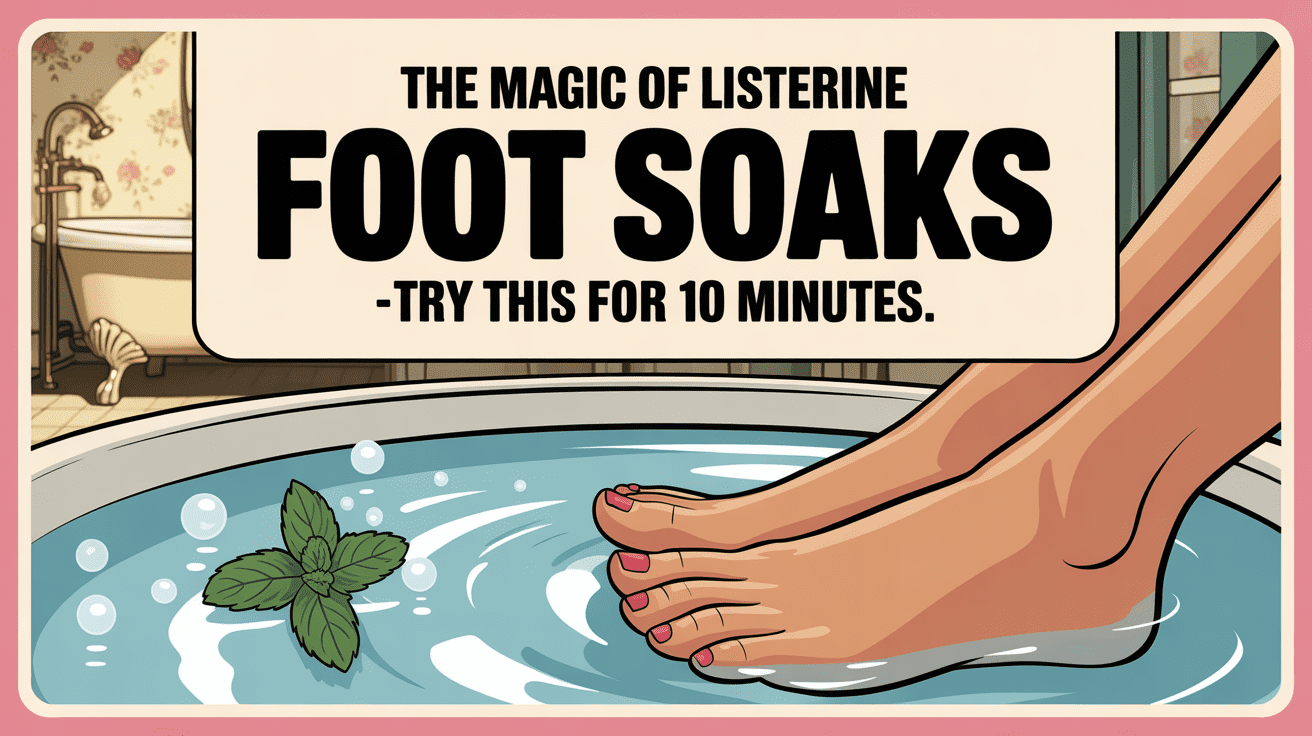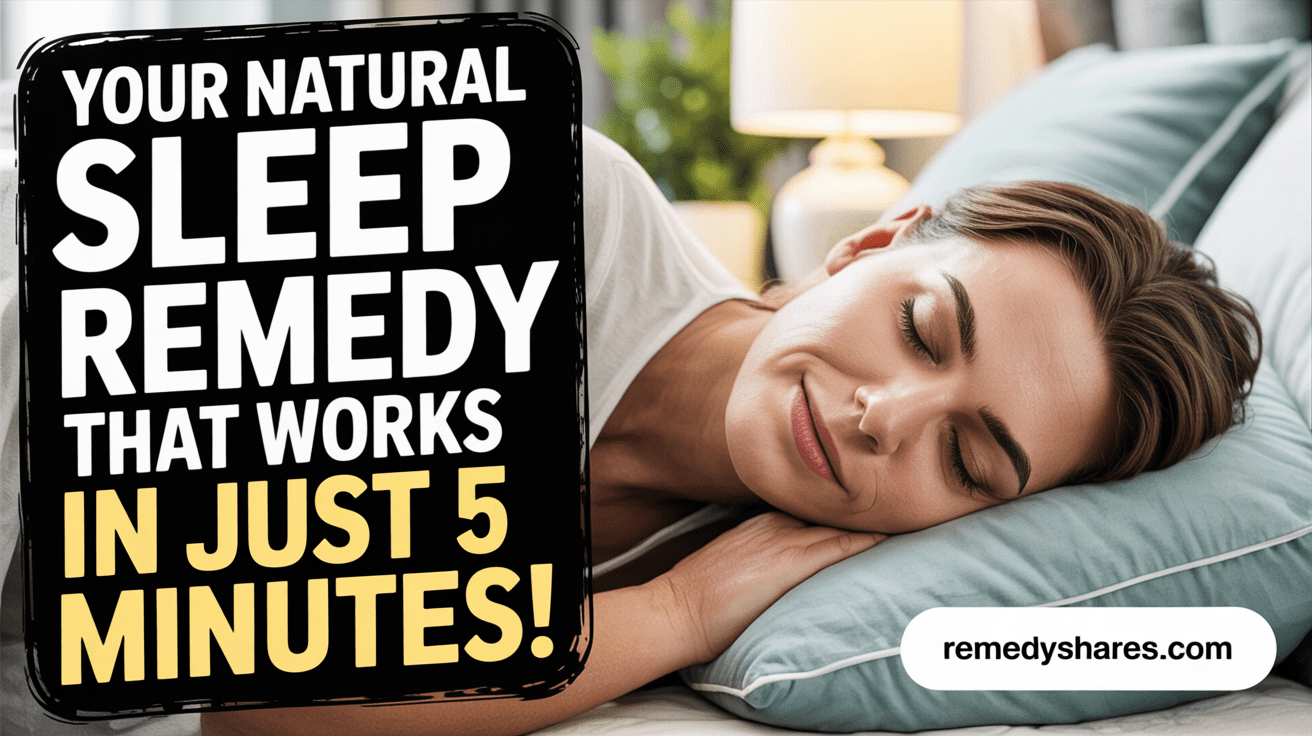Hey there! Ready to give your feet some serious TLC? If you’ve heard buzz about using mouthwash for a foot soak, you’re in the right place. It might sound a little unconventional, but soaking your feet in a simple solution can offer some pretty fantastic benefits. Let’s dive in and see what happens when you try it for just 10 minutes.
The Science Behind Why This Works
Okay, so this wasn’t originally invented for foot care, but its ingredients make it surprisingly effective. It contains things like thymol, eucalyptol, and menthol. These are strong antiseptic compounds.
They specifically target the bacteria and fungi hanging out on your feet. You know, the kind that cause foot odor and that annoying athlete’s foot. Plus, it has ethanol, which is a natural astringent. It helps dry up that extra moisture between your toes where fungus loves to breed.
When your feet hit the water, these active parts penetrate your skin a bit. This basically creates an unfriendly zone for those unwelcome microbes. That cool, tingly feeling? That’s usually the menthol doing its job, helping to cool things down and make your feet feel refreshed.
What You’ll Need to Get Started
Putting together your foot soak is super easy. You just need a few basic things. Grab some original antiseptic mouthwash – skip the fancy flavored ones for this.
You’ll also need warm water. Get yourself a large basin or a foot spa that lets you comfortably dunk both feet. And keep a soft towel handy for drying off.
A timer is a good idea so you can track your soak time accurately. If you want to step it up, a pumice stone or foot brush is great for afterward.
For the soak itself, mix equal parts mouthwash and warm water. About a cup of each is usually enough. If you’re dealing with tougher foot issues, adding one cup of white vinegar can really boost the power of the solution.
Your Simple Step-by-Step Guide
Ready to soak? First, mix up your solution. Pour equal amounts of the mouthwash and warm water into your basin or foot spa.
You want enough liquid to cover your feet up to your ankles. A cup of each should do it for a standard basin.
Dip your hand in to check the temperature. It should feel nice and comfortably warm, not too hot.
Once the temperature is right, find a comfy spot where you can sit back and relax for the next 10 minutes. Put a towel under the basin to catch any drips. Keep your drying towel nearby too.
Now you’re all set for a soothing foot treatment that many people swear by for keeping their feet feeling soft and clean.
What Goes Down During Your 10-Minute Soak
Get ready for some interesting sensations once your feet are in the soak. Initially, you’ll notice a cool tingle right away. That means the menthol and the antiseptic stuff are starting to work their magic.
Around the halfway point, maybe five minutes in, your feet might start feeling a little numb. Don’t worry, that’s pretty normal. The oils in the solution are helping to soften your skin and deal with any lurking bacteria.
If foot odor is an issue for you, you’ll likely start noticing a fresh, medicinal kind of smell replacing any unpleasant odors.
As you get closer to the end of the 10 minutes, your feet should feel seriously invigorated and noticeably cleaner. The solution will have softened any dead skin, making it the perfect time for a bit of gentle exfoliation if you like.
Awesome Benefits for Common Foot Problems
Instead of shelling out for expensive treatments, a simple foot soak can offer real relief for several common foot annoyances. It’s especially effective if you’re battling athlete’s foot because those antiseptic ingredients actively fight fungal infections. If your feet are rough and calloused, the benzoic acid helps soften that hard skin and reduce dead skin buildup.
Dealing with foot odor? The strong antibacterial properties work to wipe out the bacteria that cause those smells. For toenail fungus, doing this regularly might help stop the infection from spreading and encourage healthier nail growth. Plus, that cooling menthol we talked about is awesome for soothing tired, achy feet after a long day on them.
Important Safety Checks Before You Soak
While this foot soak can be really good for your feet, you absolutely need to be careful to avoid irritating your skin or having a bad reaction. Do not use this if you have open wounds, cuts, or severe skin conditions on your feet. Seriously, wait until they’re healed.
If your skin is on the sensitive side, just use a bit more water to dilute the solution further than usual. Limit your soak time to 10 or 15 minutes max. Leaving your feet in for too long can actually dry out your skin. If you feel any burning, redness, or discomfort, pull your feet out right away and rinse them with clean water.
It’s always a smart move to do a little patch test on a small area of skin before you dive into a full soak. And remember to always moisturize your feet generously after soaking. The antiseptic stuff can be drying. If you have diabetes or problems with circulation, play it safe and check with your doctor before starting this routine.
Pro Tips to Get the Best Results
Want to maximize the benefits while keeping things safe? Experts recommend focusing on a few key areas: timing, temperature, and your technique.
Aim for a soak time between 15 and 20 minutes. Any longer risks drying your skin, but any shorter might not give the antiseptic ingredients enough time to really work their magic.
Keep the water temperature between 90-95°F (32-35°C). This range is comfortable for the whole soak and can help improve circulation.
Here’s another tip for the mixture: try adding 1 cup of the mouthwash to 1 gallon of warm water. And for technique? Gently massage your feet every 5 minutes during the soak. It helps boost circulation and lets the solution penetrate your skin more effectively.
Mixing It Up: Other Ingredients and Variations
While the classic approach is great, you can actually boost the benefits or try alternatives if you prefer. Adding a cup of Epsom salt is fantastic for reducing swelling and giving those calluses an extra push to soften. You could also mix in a few drops of tea tree oil for extra antifungal punch, or lavender essential oil if you want a calming vibe.
No mouthwash on hand? No problem! White vinegar is a well-loved alternative. Many foot care fans swear by it. Just mix one part vinegar with two parts warm water. For a really invigorating twist, toss in some fresh mint leaves or a few drops of peppermint oil. These variations are especially good if the strong menthol scent of the mouthwash isn’t your favorite.
Watch Out For These Common Mistakes
Even though this soak can be a game-changer for your feet, some simple errors can make it less effective or even cause problems. Knowing what not to do is key.
Don’t soak your feet for longer than recommended. Overdoing it can seriously irritate and dry out your skin, especially with the strong antiseptic properties of the original solution.
Never use hot water. It’s just uncomfortable and could even burn your skin. Stick to water that feels comfortably warm.
And this is a big one: never skip the dilution step! Using pure mouthwash is a no-go. Always mix it with water using the proper ratio (typically one part mouthwash to one part water, or try the 1 cup to 1 gallon expert ratio) to prevent skin sensitivity and chemical burns.
How Often Should You Do It & What About Aftercare?
Getting great results means sticking to a good schedule and taking care of your feet afterward. Start with two to three soaks per week. See how your skin reacts and adjust from there. Don’t do it daily, as that can definitely dry out your feet too much.
After you finish soaking, pat your feet completely dry. Be extra careful to dry thoroughly between your toes.
Right after drying, put on a rich moisturizer. This helps lock in the good stuff and counteracts any drying effects from the soak.
Wearing clean cotton socks afterward is a good idea to protect your freshly treated feet. If you’re doing your soak before bed, let that moisturizer soak in for about 10 minutes before putting on socks for some overnight pampering.
Quick Answers to Your Questions
- Can this soak remove dark spots? You might notice some dark spots looking a bit lighter with regular soaks, but don’t expect dramatic changes. Combining it with gentle exfoliation usually gives better results.
- Will the strong smell stay on my feet? Don’t worry about that! The smell won’t stick around. Once you’ve rinsed and dried your feet properly, they’ll just smell like… clean feet!
- Can I use any type of mouthwash? It’s best to stick to original or cool mint varieties. Skip the whitening versions, as they don’t contain the same germ-fighting ingredients you’re looking for in a foot soak.
- Is it safe during pregnancy? It’s always smart to check with your doctor before trying foot soaks during pregnancy. While it seems mild, some ingredients could potentially be absorbed through the skin.
- Can kids use this soak? It’s not recommended for children under 12. Their skin is much more sensitive and might react negatively. If you’re concerned about your child’s feet, chat with their pediatrician for safe alternatives.
Ready to give it a try? Your feet will thank you!
